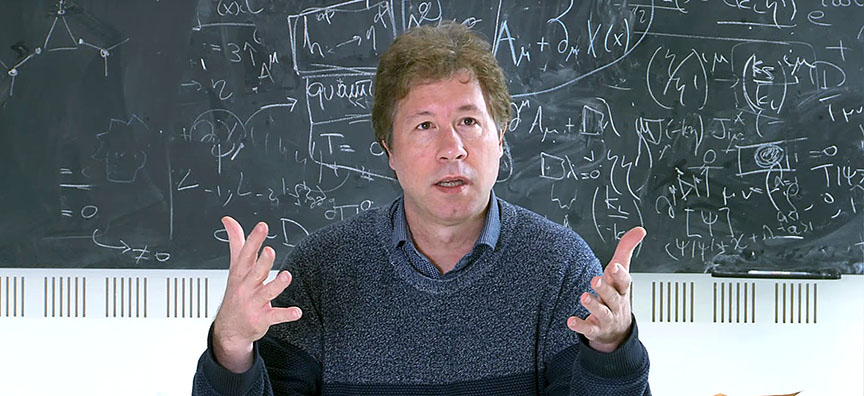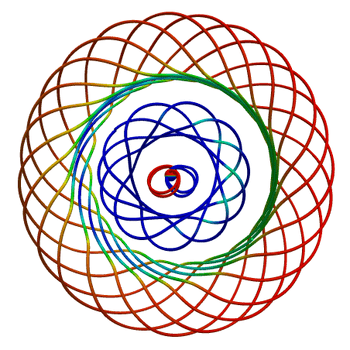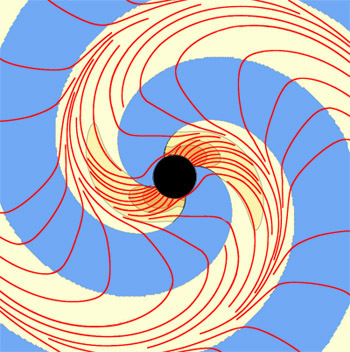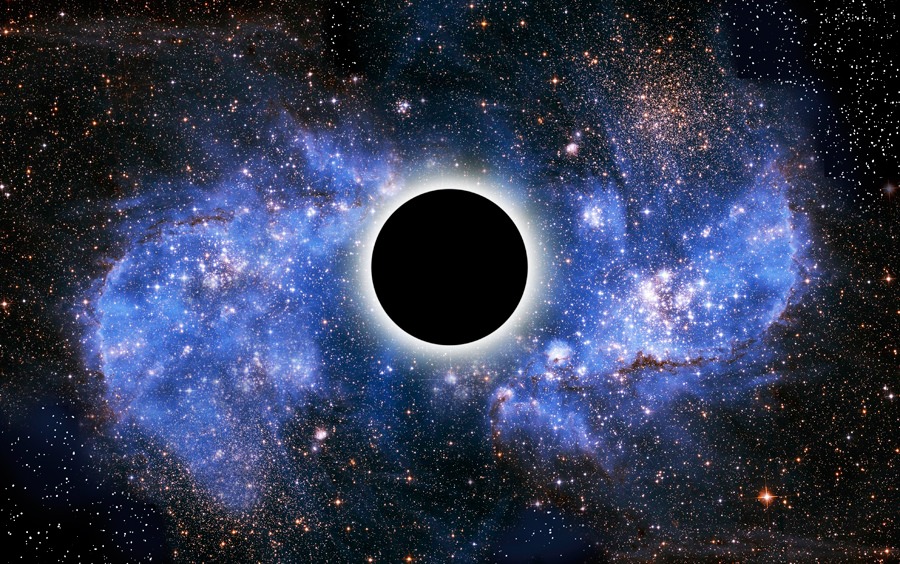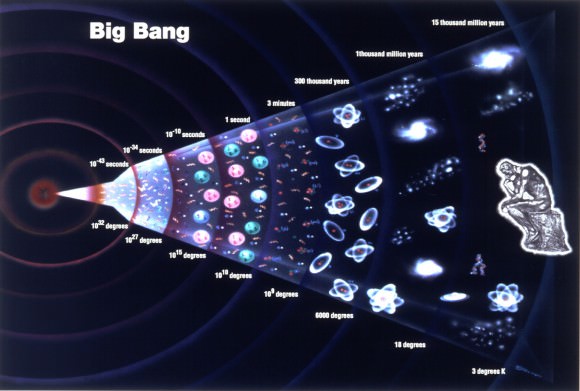Erik Verlinde explains his new view of gravity
Let’s be honest. Dark matter’s a pain in the butt. Astronomers have gone to great lengths to explain why is must exist and exist in huge quantities, yet it remains hidden. Unknown. Emitting no visible energy yet apparently strong enough to keep galaxies in clusters from busting free like wild horses, it’s everywhere in vast quantities. What is the stuff – axions, WIMPS, gravitinos, Kaluza Klein particles?
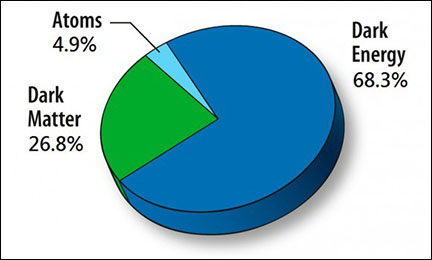
It’s estimated that 27% of all the matter in the universe is invisible, while everything from PB&J sandwiches to quasars accounts for just 4.9%. But a new theory of gravity proposed by theoretical physicist Erik Verlinde of the University of Amsterdam found out a way to dispense with the pesky stuff.

Unlike the traditional view of gravity as a fundamental force of nature, Verlinde sees it as an emergent property of space. Emergence is a process where nature builds something large using small, simple pieces such that the final creation exhibits properties that the smaller bits don’t. Take a snowflake. The complex symmetry of a snowflake begins when a water droplet freezes onto a tiny dust particle. As the growing flake falls, water vapor freezes onto this original crystal, naturally arranging itself into a hexagonal (six-sided) structure of great beauty. The sensation of temperature is another emergent phenomenon, arising from the motion of molecules and atoms.
So too with gravity, which according to Verlinde, emerges from entropy. We all know about entropy and messy bedrooms, but it’s a bit more subtle than that. Entropy is a measure of disorder in a system or put another way, the number of different microscopic states a system can be in. One of the coolest descriptions of entropy I’ve heard has to do with the heat our bodies radiate. As that energy dissipates in the air, it creates a more disordered state around us while at the same time decreasing our own personal entropy to ensure our survival. If we didn’t get rid of body heat, we would eventually become disorganized (overheat!) and die.
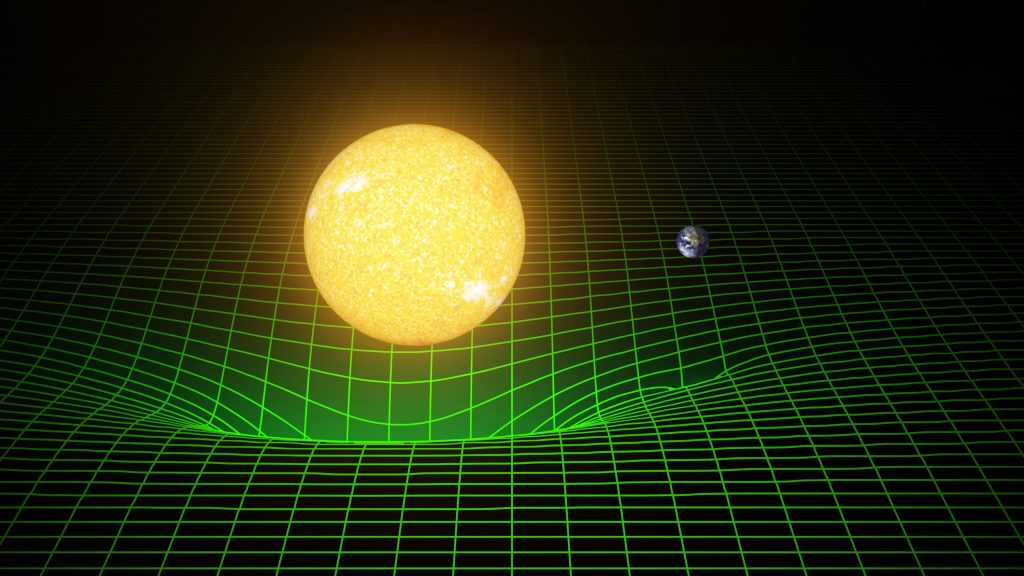
Emergent or entropic gravity, as the new theory is called, predicts the exact same deviation in the rotation rates of stars in galaxies currently attributed to dark matter. Gravity emerges in Verlinde’s view from changes in fundamental bits of information stored in the structure of space-time, that four-dimensional continuum revealed by Einstein’s general theory of relativity. In a word, gravity is a consequence of entropy and not a fundamental force.
Space-time, comprised of the three familiar dimensions in addition to time, is flexible. Mass warps the 4-D fabric into hills and valleys that direct the motion of smaller objects nearby. The Sun doesn’t so much “pull” on the Earth as envisaged by Isaac Newton but creates a great pucker in space-time that Earth rolls around in.
In a 2010 article, Verlinde showed how Newton’s law of gravity, which describes everything from how apples fall from trees to little galaxies orbiting big galaxies, derives from these underlying microscopic building blocks.
His latest paper, titled Emergent Gravity and the Dark Universe, delves into dark energy’s contribution to the mix. The entropy associated with dark energy, a still-unknown form of energy responsible for the accelerating expansion of the universe, turns the geometry of spacetime into an elastic medium.
“We find that the elastic response of this ‘dark energy’ medium takes the form of an extra ‘dark’ gravitational force that appears to be due to ‘dark matter’,” writes Verlinde. “So the observed dark matter phenomena is a remnant, a memory effect, of the emergence of spacetime together with the ordinary matter in it.”
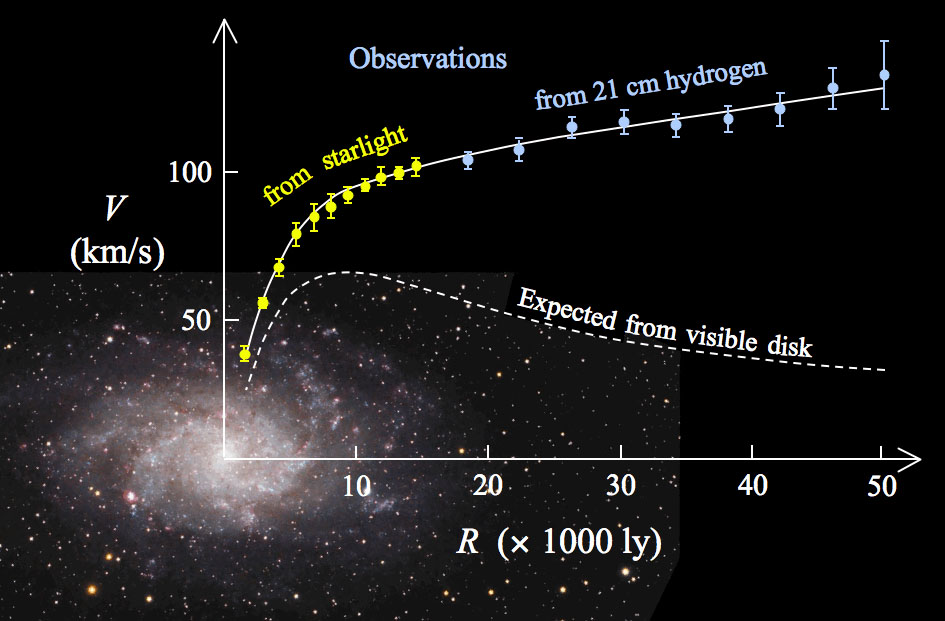
I’ll be the first one to say how complex Verlinde’s concept is, wrapped in arcane entanglement entropy, tensor fields and the holographic principal, but the basic idea, that gravity is not a fundamental force, makes for a fascinating new way to look at an old face.
Physicists have tried for decades to reconcile gravity with quantum physics with little success. And while Verlinde’s theory should be rightly be taken with a grain of salt, he may offer a way to combine the two disciplines into a single narrative that describes how everything from falling apples to black holes are connected in one coherent theory.

